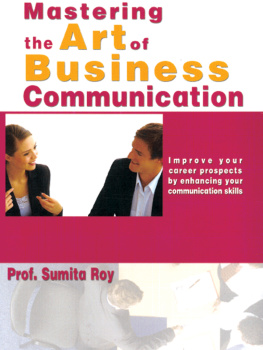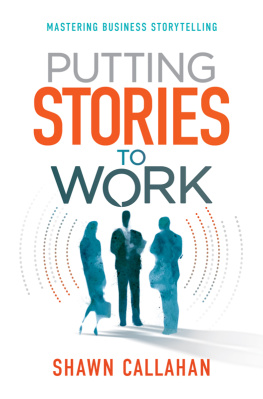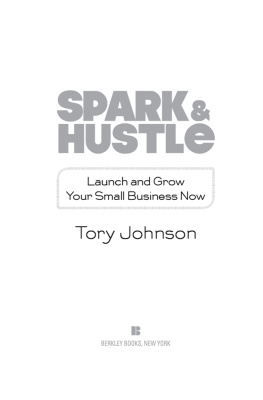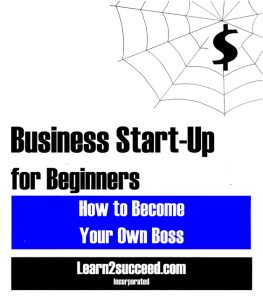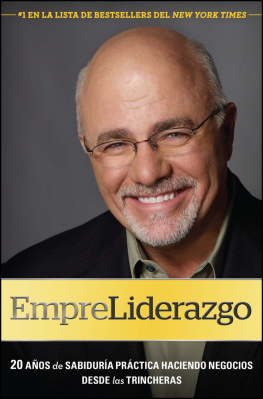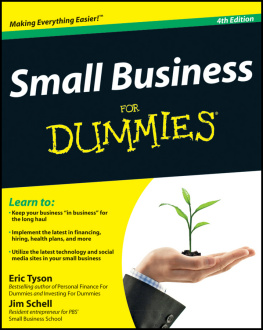This publication is designed to provide accurate and authoritative information in regard to the subject matter covered. It is sold with the understanding that the publisher and author are not engaged in rendering legal, accounting, or other professional services. If legal advice or other expert assistance is required, the services of a competent professional should be sought.
Published by Greenleaf Book Group Press
Austin, Texas
www.gbgpress.com
Copyright 2015 Farran Enterprises, L.L.C.
All rights reserved.
No part of this book may be reproduced, stored in a retrieval system, or transmitted by any means, electronic, mechanical, photocopying, recording, or otherwise, without written permission from the copyright holder.
Distributed by Greenleaf Book Group
For ordering information or special discounts for bulk purchases, please contact Greenleaf Book Group at PO Box 91869, Austin, TX 78709, 512.891.6100.
Design and composition by Greenleaf Book Group
Cover design by Greenleaf Book Group
The Paradoxical Commandments reprinted with the permission of the author. Kent M. Keith 1968, renewed 2001.
Cartoon (ID: med15), reprinted by permission of the artist/author, Randy Glasbergen. Excerpts from The Psychology of Waiting Lines, by David Maister, reprinted by permission from the author (http://davidmaister.com/articles/the-psychology-of-waiting-lines/).
1985 by David Maister.
Email message reprinted by permission of the author, Garrett Gunderson.
Cataloging-in-Publication data is available
eBook ISBN: 978-1-62634-180-7
eBook Edition
Other Edition(s):
Print ISBN: 978-1-62634-179-1
Im dedicating this book to the perfect yin to my yang: Lorie Xelowski. Since 1998 we have been bound by a common devotion to hard work, professional challenges, and the love of business.
I am a gregarious extrovert. I love to share my ideas loudly and with as many people as possible. Lorie is a quiet introvert, like Eleanor Roosevelt or Gandhi, and she has been the best business partner a guy like me could have ever hoped for. I may express my ideas loudly and move on to the next topic without blinking, but Lorie has always been able to take these grandiose ideas, delete more than half of them, give shape to the ones she thinks have a chance, and then make them happen.
I would not be as successful as I am today without Lorie. I am deeply indebted to her and thankful that we continue working together to this very day.
In looking for a partner, you need to find someone with massive integrity, dedication to hard work, and intellectual curiosityqualities that, in my book, make her a genius.
Acknowledgments
I would like to express my gratitude to the many people who saw me through this book: to all those who provided support, talked things over, read, wrote, offered comments, or assisted in the editing, proofreading, and design. This book has come to fruition because of the community around me.
I would like to personally thank a few people who went above and beyond.
First of all, Lorie Xelowski. Lorie has been my right-hand woman for fifteen years. Her title is president of my media company, but, ultimately, she does all the operational logistics. She facilitates my crazy ideas and helps me execute them in the company and the practice. This book is dedicated to her.
Thanks to Ben Lund, who, as editor of my media company from 2006 to 2013, helped me build seven years of Howard Speaks columns. Much of the information in this book is taken from these columns.
Thanks to Charlotte Brown, my editor, who took this book from rough draft to developmental edit to line edit. She tamed my brash expressions, but kept my voice and message intact. Her patience and expertise are so appreciated.
Thanks to Tim Lott, friend and CPA, who contributed to the money section of this book. He gave me average numbers for the financials/ cash flow statements.
Thanks to Sandy Wilkinson, Valerie Williams, and Jan Sweeney. They are the intellect and fortitude behind what makes my dental practice run smoothly.
Marcie Donavon and Stacie Holub, both managers at the media company (and the three women mentioned previously) all contributed to sidebars within the book. Their added information enriches the content.
This book was a collective effort. I am grateful to the many who were involved in this process.
CONTENTS
Introduction
S o how does a dentist make so much money?
Thats what my dad, by then a successful entrepreneur himself, asked as he and I pulled into our driveway and saw our neighbor chipping golf balls into a Hula-Hoop, just as we had seen him do many times before. As we waved to our neighbor Kenny Anderson, a local dentist, Dad turned to me and said, Howie, if you had half a brain in your head youd become a dentist.
Growing up in Wichita, Kansas, I was one of seven kids. My mother stayed at home while my father spent his days scratching out a meager living as a bread deliveryman. Dad toiled more than twelve hours a day, seven days a week, yet the Farran family had a hard time paying the bills. On Sundays, wed take two cars to church where Dad would sit with us for eight oclock Mass before driving on to the Rainbow Bread Company to start his shift delivering bread to grocery stores. For the first ten years of my life, if I ever wanted to see my dad, I had to ride with him on his delivery route.
One day my father came home excited to tell us about a friend and coworker who saved up a bunch of cash, took out a loan, left his job delivering bread, and purchased a Sonic Drive-In fast-food franchise. In just months it was making a killing and the guy was raking in more cash in a month than hed see in a year driving a truck. His story got Dads gears spinning. For days it was all he could talk about. Id never seen my father so revved up about anything. He saw it as a great opportunity to do something about his insufficient income and provide better lives for us.
In the ensuing weeks, during whatever time away from work he could muster, my father spent with his friend, either on the phone or at his drive-in. He knew he could do as good a job as his friend and decided taking on a franchise was worth the risk.
Can you imagine how much courage it took for a guy supporting a wife and seven kidsa bread deliveryman with little business acumento bet everything he had on a fast-food franchise? Sure, if it didnt work out, he could go back to delivering bread, but he was driven to make it work. Outwardly my father was the king of cool about it; he might have been stressed out of his mind making this decision, but if he was, we never knew it.
Hindsight being 20/20, buying his first Sonic franchise was the best decision my father ever made. Over the next ten years, our family went from abject poverty to becoming fairly wealthy, as my dad accumulated nine Sonic restaurants in four states. My relationship with my father didnt change much. While my friends threw the ball around in the back yard or went camping with their dads, spending time with my dad still meant tagging along with him at work. But man, when I went to work with my dad, I was the proudest little boy in the world. I got to watch my dad run his business... and he was good at it! Handling customers, managing his employees, watching overhead, placing orders, stepping in where help was neededmy father made it all look effortless.
Through my fathers risks and eventual success, I witnessed firsthand the power of self-employment, business, marketing, advertising, and human relations. I learned early on the three keys to business: how to make something, how to sell it, and how to watch the numbers to ensure you stay in business. And I started to make observations that led to the idea behind this bookthat the uncomplicated heart of business success lies in the ability to manage three things: people, time, and money. Dad nurtured in me a personality hardwired for business.


